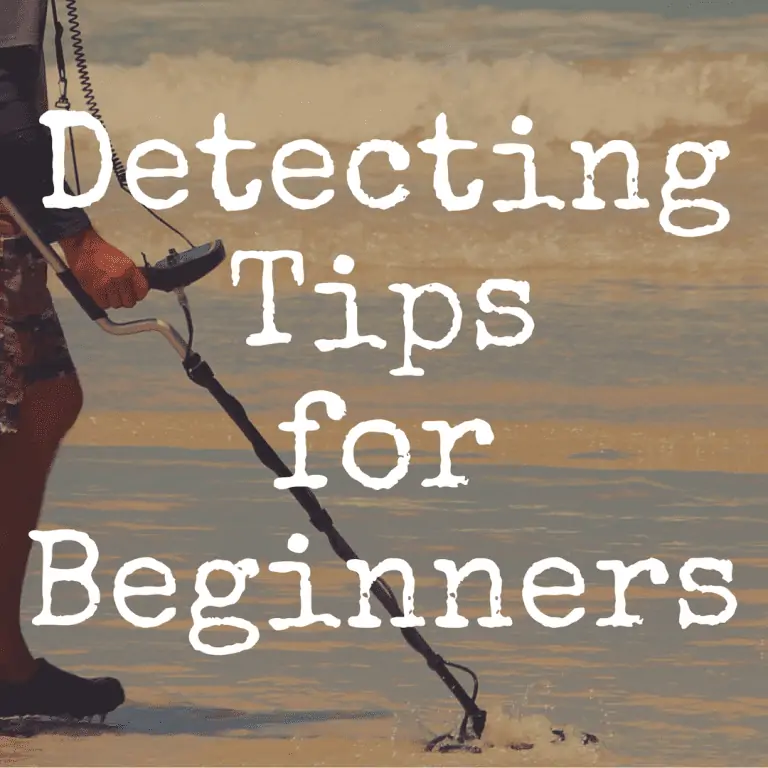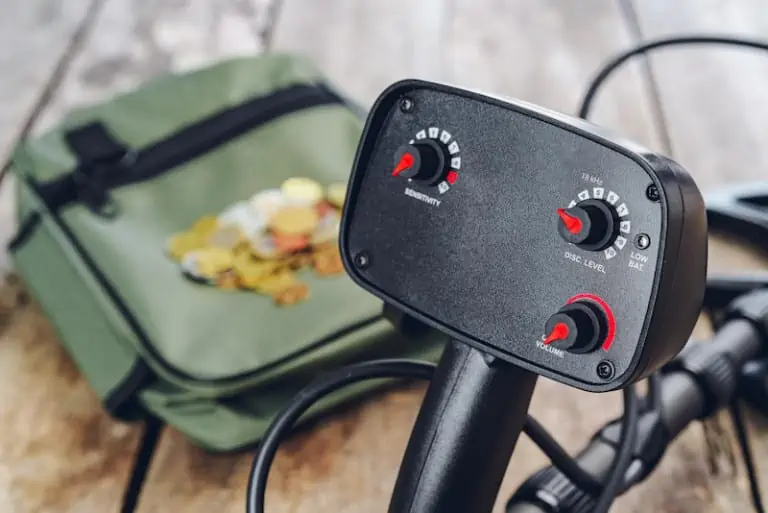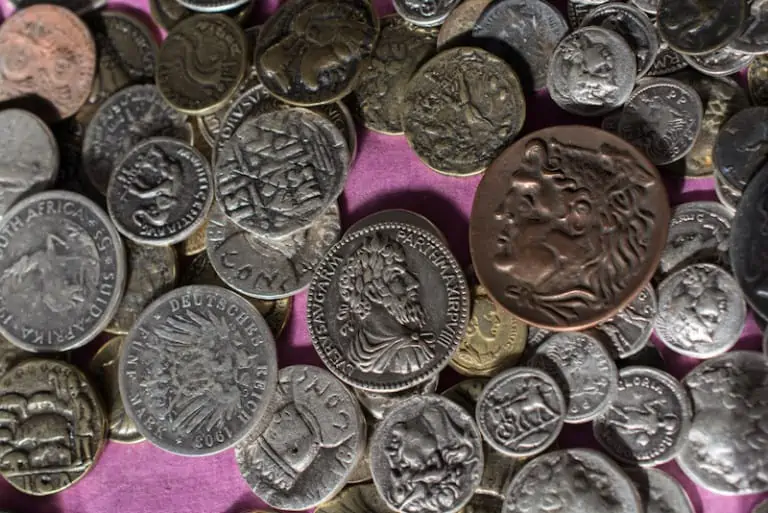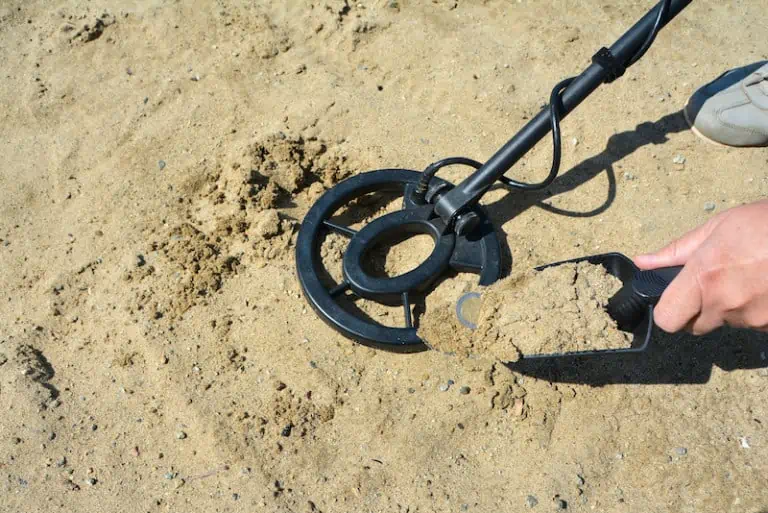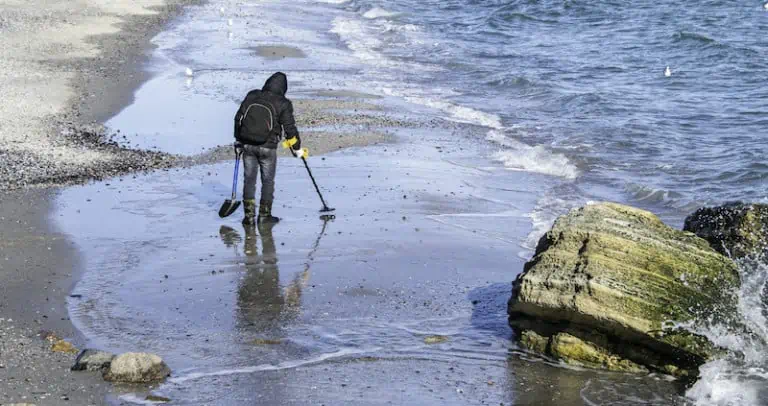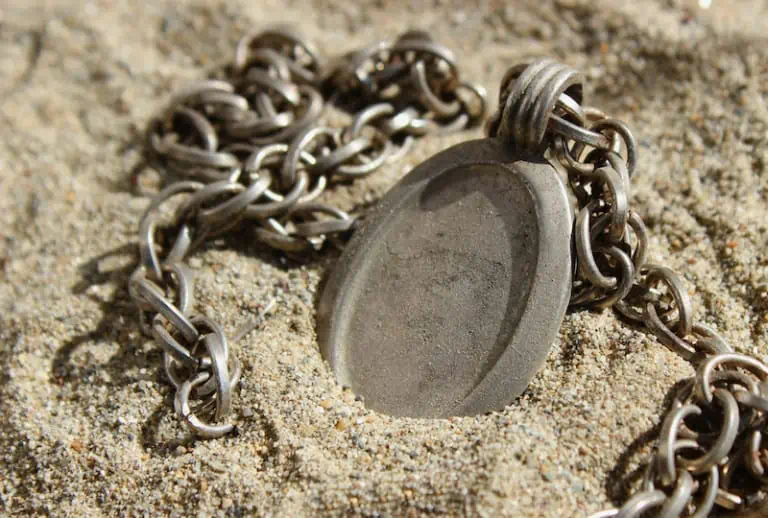Metal Detecting for Rings – Find Jewelry You’ll Love
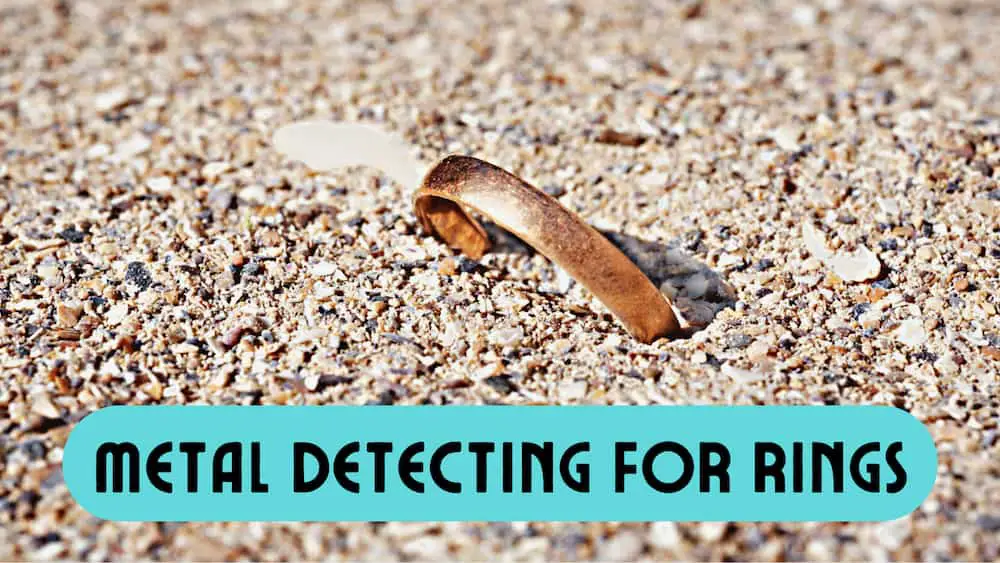
For those that love to go metal detecting for rings, perhaps because you hope to find a wedding ring or engagement ring worth a good deal of money, it’s always important to know that success requires a good deal of preparation. So in this article, I’m going to provide you with everything you need to know in order for you to be able to successful in grasping that proverbial “brass ring.”
Metal Detecting for Rings: How to Find Jewelry
Many metal detectors will have a jewelry setting on them. This will be a preset program designed for maximum sensitivity to jewelry of all types. Jewelry mode will have less discrimination, so it may pick up more trashy targets too, which can be frustrating. When you are searching for rings, you can also use the preset coin mode, because coins and rings are roughly the same diameter. Coin modes feature higher discrimination than jewelry mode but will still detect trashy targets.
One of the best ways to find rings while metal detecting is to become more familiar with your metal detector. If you have a few rings at home made of distinct types of metal, see how your metal detector reacts when you scan them. This will help you better understand how they will sound out in the field. If you are looking for gold rings, they will sound different than silver rings or platinum rings. Get used to the sounds your metal detector emits for different metal types for better success in finding rings.
Adjusting your sensitivity can be helpful when detecting for rings. Sensitivity means the amount of energy being sent to the search coil, so the more energy sent to the coil, the deeper the metal detector will search. You will lose other data such as discrimination and battery life with higher sensitivity. Discrimination refers to the elimination of certain types of metal objects. For example, you can discriminate iron targets so the detector will no longer alert when iron is detected. This can help you focus more on jewelry and less on undesirable targets.
- You Might Also Like: 50 Metal Detecting Tips to Find Jewelry
Metal Detecting for Gold Rings
When searching for gold rings, you may want a gold specific metal detector, or at the very least, one with a higher operating frequency. Gold is best found at frequencies above 18 kHz. This is because gold is not as conductive as metals like silver or copper, which are found at lower frequencies. Gold detectors are built to find gold specifically, and typically operate at higher frequencies. Another option is an all-purpose metal detector with a gold setting. Gold settings will have similar tendencies to a gold specific metal detector.
Many gold rings are roughly the size as a coin. If your metal detector has a coin setting, it may be able to pick up gold rings, too. Detectorists have had great successes in coastal states on the beaches finding gold rings with metal detectors. Try assessing your metal detector at home with a gold ring, or a gold coin, to see how it behaves. This can give you a good indication of how it will react to a gold ring in the field.
Best Places to Find Rings Metal Detecting
Let’s begin with the beach—a place everyone loves to be, whether you’re metal detecting or just relaxing.
Beaches
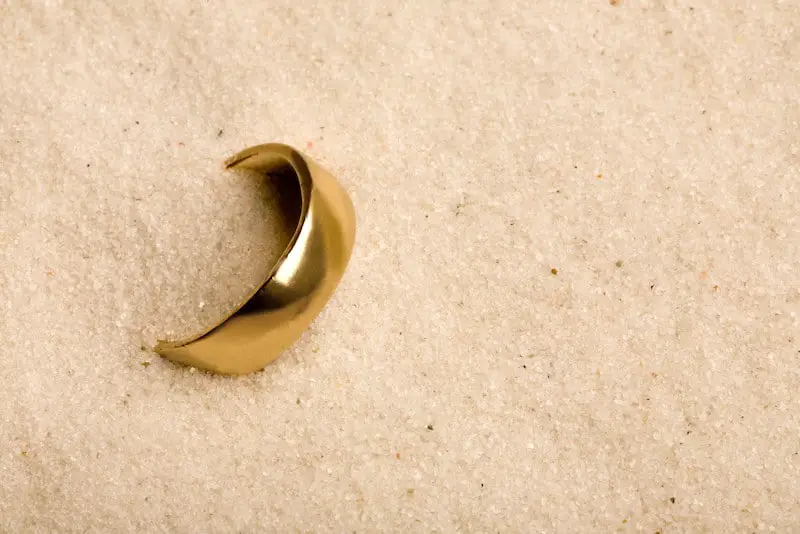
Metal detecting on the beach can be an excellent source for finding lost rings. Beaches are full of lost jewelry. People recreate for the day and their rings either fall off or fall out of their bags or purses. Many beaches are crowded during the warmer months as people flock there for recreation activities. Anywhere like this, where people are constantly congregating, will have a great chance of having lost items. On a beach, the sand almost instantly covers any item that is dropped. This means you will have a fantastic opportunity to find multiple rings with a little time and effort.
When detecting on the beach, you will want to purchase a sand scoop. Sand scoops are a vital tool when searching on the beach. Digging in the sand can be very frustrating as the hole you dig almost instantly fills in with more sand grains. Using a sand scoop can help with this. A sand scoop is essentially a basket type shovel with holes. The sand will filter out of the basket while the desirable target stays inside. This makes metal detecting on the beach a lot easier and more efficient. The more efficient your metal detecting is the more successful it will be.
Homesteads
Another wonderful place to metal detect are old homestead sites. Old homestead sites are full of abandoned jewelry. Rings, necklaces, and relics have all be found in homestead sites. Search your town records and see if any areas nearby, including wooded areas and rural areas, were once old homesteads.
Always make sure you check to see if these homestead sites are on private or public property before you metal detect. Private property requires written permission prior to metal detecting. Public property is subject to all local and federal level metal detecting laws.
Ghost Towns
Like old homesteads, ghost towns can be a wonderful place to find lost rings. A lot of ghost towns were once bustling townships with hundreds or thousands of citizens. Some left many belongs behind when they moved on. Many ghost towns are privately owned, while some are state owned.
Find the ownership information before you head out so you can ensure you have the proper permissions, and you are following all the necessary laws.
Parks
Public parks are a suitable place to find rings. Parks are often busy year-round, so there is a good chance someone has lost an item, including rings. Some cities ban metal detecting in city parks, some cities require permits, and some cities have restrictions on areas within parks where you can metal detect. You may also have to have specific digging implements.
Check with your city to find out what the rules and regulations are before you metal detect in your city parks.
Forests
This might sound odd, but the forest is one of my favorite places to metal detect. Many forests have old paths and trails through them that were used by travelers and immigrants long ago. These trails and paths may have lost items like rings buried underneath. Areas with camping sites are also beautiful places to find lost rings. Campsites are popular during the warmer months, and many people lose items while camping. Most national forests allow metal detecting within them, with some exceptions. Always check with the park ranger before you metal detect.
Your Own Yard
One of the best places to search can literally be your own yard. I have found many items in my own yard including several Hot Wheels cars from the 1980s, and old Dutch oven, and an emerald ring. Take a scan of your own yard. You do not need any special permission to metal detect your own property! This also gives you good practice with your metal detector, so you know more of what to expect out in the field.
Best Metal Detectors For Rings
All metal detectors can find rings because they are all designed to find metal. Having the right metal detector for your treasure needs is especially important, however. Some are better at finding jewelry and gold than others.
Gold is difficult to find with some metal detectors because it is not as conductive as metals like silver and copper. Larger pieces of gold can still easily be found with any metal detector, but fine gold jewelry or gold rings may be more difficult. Here are my recommendations for the best metal detectors to find rings.
Fisher Gold Bug 2
Fisher’s Gold Bug 2 is a great gold hunting metal detector. It operates at 71 kHz, so it is sensitive to even the smallest gold. This model is controlled by knobs and has a small screen showing target identification and other data. This model will work well in all areas.
Gold detectors eliminate issues like high mineralization that are often encountered in areas with gold and areas with saltwater. So, you can take this detector to the beach and find some gold rings!
- You Might Also Enjoy: Fisher Gold Bug 2
Minelab Equinox 800
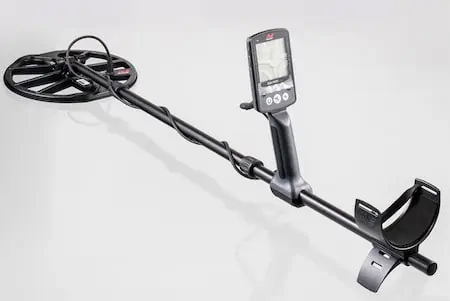
Minelab’s Equinox 800 is a fantastic all purpose metal detector. This model has multiple frequency search, so it can operate across multiple frequencies simultaneously. This is a fantastic way to find more treasure types. It can also operate on 5 single frequencies, from 5 to 40 kHz.
This detector has 4 detection modes: Park, Beach, Field, and Gold, with automatic and manual ground balancing, adjustable sensitivity, threshold, tone break, discrimination, and it is waterproof up to 10 feet. This is the perfect detector for finding any type of rings on the beach, in the park, or in any other setting.
- You Might Also Enjoy: Minelab Equinox 800 review
Garrett AT Max
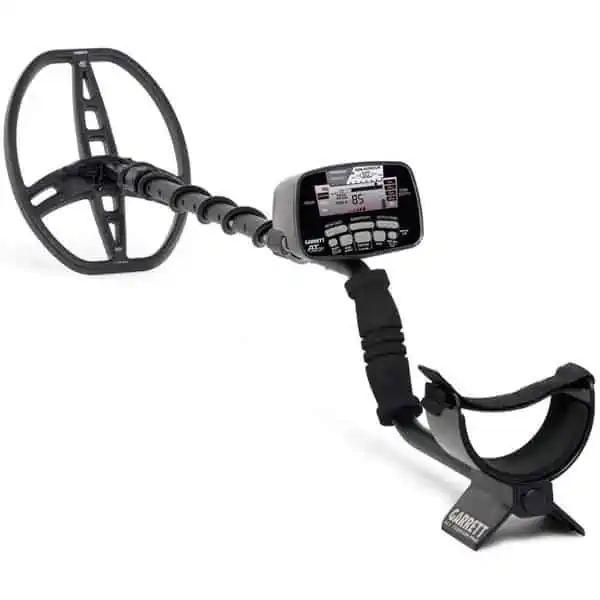
Garrett’s AT Max is another great model for hunting for rings. The AT Max features wireless headphones, backlight, all metal mode, 44 iron discrimination segments, adjustable volume and notch discrimination, proportional audio, and it is waterproof up to 10 feet. This model operates at 13.6 kHz. This detector is made for all treasure types and all terrains.
Nokta Makro Impact
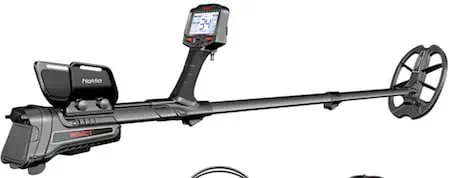
The Nokta Makro Impact operates on 3 different frequencies of 5, 14, and 20 kHz. It features adjustable audio, iron volume, tone break, notch filter, automatic, manual, and tracking ground balancing, a pinpointer, and 12 search modes.
One of my favorite features is this detector vibrates upon detection. This is an excellent feature for those hard of hearing. The search coil of the Impact is waterproof, but the control box is not so this detector should not be fully submerged in water.
Bounty Hunter Time Ranger Pro
Bounty Hunter’s newest offering is the Time Ranger Pro. This detector operates at 19 kHz, has a pinpointer, backlit display, adjustable iron audio, notch mode, computerized Ground Grab ground balance with manual override, continuous ground readout, mineralization graphic, and salt ground balancing. This detector has great target separation so it will be an amazing detector for finding rings.
- You Might Also Enjoy: Bounty Hunter Time Ranger Pro
Metal Detecting Tips for Rings

1) Choose the right location. Beaches, parks, homesteads, ghost towns, forests and anywhere else people gather will give you the best opportunity to find rings with your metal detector.
2) Choose the right metal detector. All purpose metal detectors are the best type of metal detector to find jewelry. If you are specifically looking for gold rings or other gold jewelry, you may want a gold-specific metal detector.
3) Hunt after storms. Storms can turn a up and move a lot of ground. After storms is a wonderful time to search for rings with a metal detector.
4) Search during the fall. Fall is coming off the busiest season in most locations, the summer. Summer months are when people lose the most items as they are recreating in areas like beaches. Search during the fall for the best chance to find lost rings.
5) Search in all metal mode, or without discrimination. While this will increase the number of trashy signals, you will get more depth and you will miss fewer good targets.
6) Overlap your search coil swings. Sweep slowly and always overlap so you do not miss any targets.
7) Research. This is one of the most important tips for any metal detectorist. Researching the history of the area you intend to search can yield valuable information about the areas you should check and the people who inhabited the area. It can also show you the best locations to search for lost rings.
8) Use headphones. Headphones are a great tool for finding lost rings. When you metal detect along the beach or in a park, there is a lot of external noise. Using headphones can help block this noise while simultaneously helping you hear all the signals your metal detector emits more clearly. You can also hear faint signals easier with headphones so you will not miss a ring if it is buried deeply or close to another target.
9) Know your metal detector. This can take a lot of practice and time. Start by familiarizing yourself with the manual. Then take the detector out in the field. You can start in your own yard. Practice at home with different metal types to see how it sounds and reacts. Sweep your yard to find buried items and note how the detector behaves. This gives you a good base for your actual field detecting.
10) Have interchangeable search coils. Some search coils work better in certain areas. Smaller search coils will work better in areas with high trash. Larger search coils work better in larger, cleaner areas. If your metal detector has interchangeable search coils, make sure you have at least one extra coil so you can be prepared while metal detecting for various rings in all terrains.
Conclusion
Metal detecting for rings is quite like metal detecting for any other treasure type. You want to ensure you have the proper metal detector, the proper accessories, and the proper knowledge before you head out. Always do your research before metal detecting so you know the laws and regulations in your area.
Some cities and counties forbid metal detecting, while others allow it. Some require a permit, while others do not. Some state parks will allow metal detecting in certain areas, and others forbid it completely. Make sure you know the rules before you metal detect. Punishments for metal detecting improperly can be fines, confiscation of your items, and even jail time. It is not worth the risk, so always take the time to find out the laws.
When going detecting, try detecting on the beach. Beaches are one of the best places to metal detect for rings. Beaches are popular tourist destinations and popular with locals, as well. They can also be the site of old shipwrecks, where items have been washed ashore. Be sure you take your sand scoop along for easier recovery. Make sure your metal detector can hand saltwater areas if you plan to metal detect on a saltwater beach. Saltwater is naturally conductive and can interfere with the operation of some metal detectors.
I have personally seen multiple metal detectorists on the beaches in California and Florida come away with hundreds of gold and silver rings they have found buried in the beach sands. These beaches are popular areas and have temperate climates, so they are popular year-round. Many beaches in the south have great weather for a good portion of the year so you stand a fair chance of finding some rings and other items with your detector. Get your sand scoop, your metal detector, your headphones, and find yourself some rings!
- If you enjoyed this article, please “like” our brand new Facebook page!
You Also Might Like:
